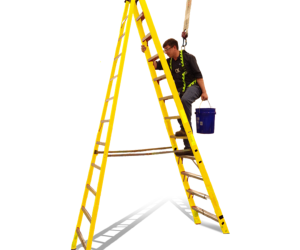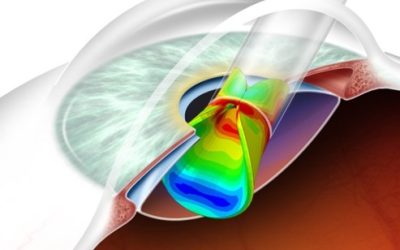Generative Product Design
An Inevitable Progress for Human-Centered Industrial Design
Artificial Intelligence (AI) is a constant and ubiquitous topic in the business world and our media that lives in a dark cloud of anxious suspicion. AI has had a very suspect prelude in science fiction before actually touching the recent lives of everyday people. Consider the sentient computer HAL 9000, locking Dr. Dave Bowman outside the main spacecraft from the 1968 release 2001 A Space Odyssey. Images like the Terminator and Skynet cement our uneasy relationship with technology, which forbodes a loss of autonomy and even our obsolescence.
For now, AI is a companion for our work and lives, with significant capability in narrow focuses and not conscious. Regarding innovation and product design, AI tools will continue accelerating our ability to explore diverse options and maximize the designer’s ability to realize a more advanced human-centered vision.
Digital Design Enables Mass Divergence in Exploration
Early in my Industrial Design education, I worked on a classic Bauhaus metamorphosis exercise intended to help a new design mind understand form generation and see gradual variation as a way to explore and find design opportunities. The activity involved constructing two divergent custom shapes and then proceeding to visually bridge these shapes with a series of blending steps, 16, 32, and 64 steps, etc.
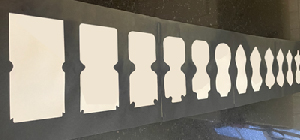
Figure 1: A portion of a shape metamorphosis
Success was measured by the smoothness of the transitions from one step to the next and by how unique the steps were in total visual composition, weighing attributes such as visual balance, dynamism, or original use of semiotics in the various steps produced. Though somewhat labor some, in the end the effect was eye opening as the transformation went left to right, one could see equal possibility taking the transformation vertically off any one shape. This was a manual exercise that is very easy to execute in many types of CAD software, it did generate an understanding of divergent exploration and the possibility to use many options to define a focal path.
Change As Chain of Steps
As a student, I understood this metamorphosis exercise in ways that reinforced design as an iterative process. That is, revisiting a problem with divergent, even nuanced solutions helps to bring a new understanding of the challenge and possible solutions. The many steps are a way to produce solutions. At this point in my career, I also see another perspective. That leaps of human change rarely occur; rather steps or small increments often accrete change. We can only learn what we are just about ready to understand. That is not to say leaps don’t appear to happen. The vision to explore and be curious about the directed motion that creates a chain of steps is critical. I’ve been shown through much trial and error that if you want to end up somewhere new, you must have a system of curiosity, much like in the way hobbies can build new perspectives, renewed professional focus, or even new businesses entirely. Your interests and curiosities, big and small, make the connections for future leaps of thought innovation.
Creativity as Connections within Curiosity
Design circles often state that “creativity is about connecting the disconnected.” This kind of statement around the essence of creativity is often associated with Mr. Jobs and Apple, but not sure the phrase is entirely of his origin. The first time I heard this statement, it stuck with me as a good definition for something elusive and challenging to identify in its beginnings. Creativity is often associated with epiphanies vs. logical steps.
I have come to see that it is objectively true that witnessing creativity in others does look like they are connecting disconnected things and making giant leaps of understanding, revelations, and delivering magic. But this is only my observation disconnected from their likely more incremental learning process.
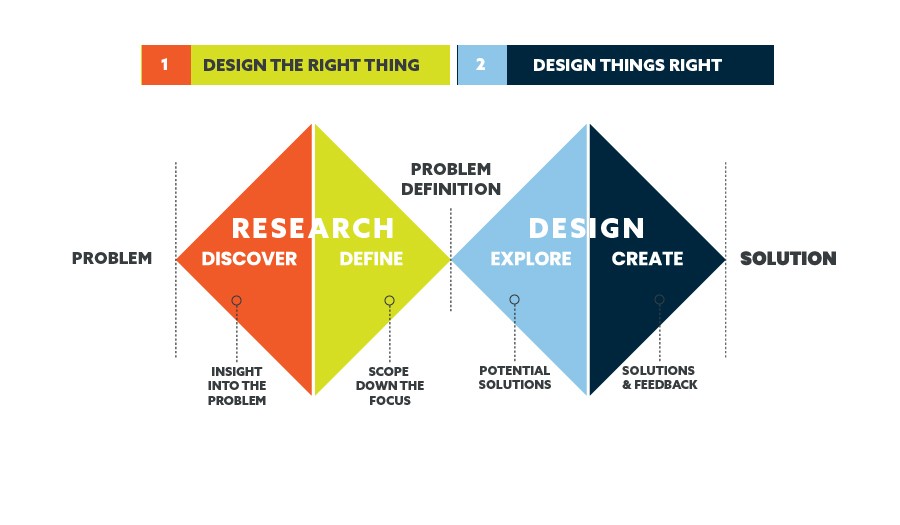
Neuroscientists point out that humans can only think one step at a time; we are not thought leapers. If we consider the creative process model of the Double Diamond, divergence is the critical initial activity in order to expand awareness and take on new learning in the interest of new perspectives and making new connections. We learn and recognize what we are just about ready to know. When someone makes a remarkable discovery or a team achieves a monumental accomplishment, it results from a chain of steps that start at what is more commonly understood and end with uncommon results.
AI and The Digital Progress
Recently there was an art competition in Colorado that gained a great deal of controversy because the winner, Jason M. Allen, used an AI visualization software, “Midjourney,” to create his piece, “Théâtre D’opéra Spatial.” The other participants in the competition were not pleased. Is this like performance enhancing drugs (PEDs) in sports or just another tool to advance the cause of creativity? On the optimistic side, AI-based tools will demand higher originality in artistic expression.
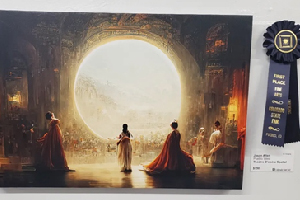
Figure3: Théâtre D’opéra Spatial.
AI-based visualization only picks up on what is omnipresent and uses it to train its data sets; in this case, it ends in an illustration. On the pessimistic side, this is another case where technology displaces craft, and history is littered with numerous fallen skill sets. -Does anyone need whale oil for their lantern?
As Industrial Designers, we have been augmenting our creative and design thinking processes with software, AI, and analytics for some time. From algorithm-derived imagery curation in Google or Pinterest to deliver more focused inspiration, AI database searches to enhance IP knowledge, or quick and deep category audits to broaden competitive understanding, as well as the development of complex AI-generated surface patterns and functional forms through computational geometry design software that would be far too detailed to carry out traditionally in CAD software.
Is AI: A Design Tool or Replacement?
The above AI context brings me to an important and impending enablement of our time as industrial designers. As a professional, I will say the quiet part out loud; generative design holds increasing promise in industrial design applications for its ability to create permutations and even solutions beyond the range of individual human capacity. Designers are limited by experience, time, and resources; analysis software can run options on a profound scale. Generative design need not be a foe to creativity. It will continue to add to our ever-expanding system of curious exploration and help generate many more iterative steps to those leaps in the design process. (However, partially automated as a system of curious exploration.)
Generative tools can bring a new era of influential data to a field like industrial design that often needs more compelling analytical data, such as marketing’s direct consumer information or engineering’s numbers bound by essential physics. If AI-based design generation is to deliver next-level solutions, options, and permutations, designers will need to train and constantly evolve it. Design as a field may stand to have more significant substantiation from its concepts and early ideas on how designs should evolve in development to have better performance, meaning, and connection. A greater range of solution options can be investigated and will have better focus from the number of alternatives explored to support the arguments. In ways that are unfamiliar and scary to some, Industrial design will move further away from classical aspects of craft and toward automation and possibly new forms of consensus building.
This progress will be sad for those that connect with design artistry but an advancement for those that see the need for design to play a more significant role in envisioning our world. There is a real fear amongst practitioners that AI will further commoditize aspects of industrial design and AI tools will further erode the craft and individual hand that has been a classic part of the field. However, this is just the latest step in a decades-long digital progress that has brought rapid permutations and fast iterative refinement versus the hand-eye coordination and process of a draftsman, modelmaker, or illustrator. At its core, ID is human-centered. With this, greater focus can be applied through AI to the human integration and life enhancement that industrial design is so good at considering.
Novel Generative Design Experiments In “Midjourney AI”
As mentioned, we have been using AI to augment our exploratory design process for some time; in another instance, we have used AI image-based software to add to our product ideation process. Some fun and unusual examples from some designers on Force-4’s Industrial Design Team are below, not attached to any projects. I enjoy the uncanny valley produced in these examples, with gestural human features, silhouettes, and devices that appear to have details at first glance but no real functional depth. Overall, there is some context, but it’s displacing at the same time. Are there advanced or iconic new designs in these images? Likely not. But just the kind of intrigue that can spark new connections for designers and the curious alike, proving very useful in ideation. These tools will only improve with collective use and eventually attain the intention and nuance needed at the higher levels of design expression and even solution finding.
Design Studies via Midjouney, Force-4 Industrial Designers: Alicia Evans, Erik Sabin, and Dom Eramo.
Summary Collage:
Descriptions: Detergent Bottle Concepts, via Midjouney, Spirits Bottle Sketches, via Midjouney, Gundam, via Midjouney, Watch Concepts I, via Midjouney, Watch Concepts II, via Midjouney, Home Health Device, via Midjouney, Toaster Concepts, via Midjouney, Making a Context Scene- A Mother Reading a Book to a Child, via Midjouney
AUTHORS

- Jason Phillips, Group Creative Director, has more than 20 years of innovation and product development experience in consumer-packaged goods, durable products, human performance applications, and technology integration.
Ref: B006-PD-AI and GenerativeTools in Industrial Design
Keep in touch with us.
Sign up for our newsletter.

